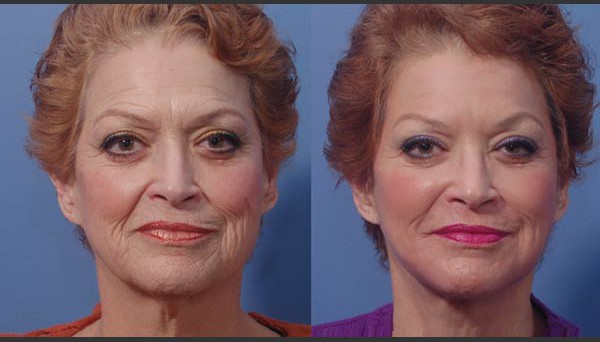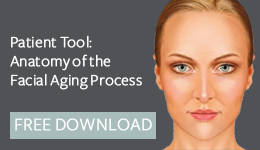Fat Transfer Procedures
(Lipo-Transplantation, Lipo-Sculpture, Lipo-Filling)
How Does Fat Transfer Work?
Dr. Zemplenyi has been interested in restoration of contour of the face since his fellowship training in Cosmetic Surgery in Beverly Hills in 1987. Modern rejuvenation such as fat transfer, is based, in part, on restoring the facial volume that has been lost through the aging process. One’s own fat (adipose tissue), used to replace the fat which has shifted or been lost, lends itself as the ideal, natural filler substance and volumizer of cheeks, temples, nasolabial folds etc. -sometimes resulting in dramatic improvement in appearance. Fat is also the richest body source of adult stem cells.
 Fat Transfer Before/After
Fat Transfer Before/After
 Fat Transfer Before/After
Fat Transfer Before/After

Fat Transfer Before/After
Fat Transfer (Fat Shifting)
With a fat transfer procedure, the adult stem cells are derived from fat that is gently harvested under local or twilight anesthesia from donor sites such as the abdomen or the hips using a modified liposuction technique. The fatty tissue is then centrifuged to remove oils and contaminants. In the meantime, the patient’s own platelets are concentrated from a blood sample, and this platelet-rich, concentrated plasma (PRP) is now added to the compressed, purified fat tissue. Platelets, which contain numerous natural growth factors that are released into the transplanted fat, help create a micro-environment that favors the complex process of differentiation of fat-derived progenitor stem cells into new fat cells. In the current theory of fat transplantation based on extensive research from Japan, it is these newly-formed fat cells that may persist and restore volume on a long-term basis.
In 2010 Dr. Zemplenyi was the first cosmetic, facial plastic surgeon in the Northwest to add platelet-rich plasma matrix (SelphylR) to transplanted fat in an attempt to increase the duration and percentage of long-term augmentation. Currently, Dr. Zemplenyi uses other systems to obtain concentrated platelet-rich plasma for fortification of the compressed fat. Fat is then ready for injection into various sites using a special technique that assures placement of small amounts of transplanted fat (adipose tissue) into multiple tunnels created at different depth levels. In Dr. Zemplenyi’s practice fat transplantation is often combined with procedures such as body liposuction and face lift so that fat removed from one area can, can with lipo-filling, be used to restore contour in another.
Following the lipo-sculpture procedure patients can experience some swelling and bruising that may persists for several days. Discomfort, if any, is easily relieved with pain and anti-inflammatory medications.
In addition to fat transfer to the face Dr. Zemplenyi uses larger volume fat transfers for natural augmentation of the breasts and buttocks (“Brazilian butt lift”). In addition to cosmetic uses, fat transfer is highly useful for partial reversal of scarring caused by radiation of the breast and chest in the treatment of breast cancer. One’s own transplanted fat alone or in combination with silicone implants provides an exciting new approach for reconstructive plastic surgery of breast and other body areas.
Fat Transfer Injections FAQ
- What is fat transfer/fat grafting/fat injection?
- Fat transfer is a procedure where fat is removed from one area of the body and then placed into other areas of the body that would benefit from increased volume. As we age we lose fat, muscle, and bone along with loss of skin elasticity and collagen. This becomes noticeable in the face as sunken eyes, hollow temples and thin lips. The hands too lose the subcutaneous tissue, making the blood vessels and tendons coursing through the hands more prominent. In the breasts, women lose fullness at the superior pole with age, especially after breast feeding. All these areas of loss can be augmented with fat to restore the more youthful appearance of a full, firm face or body. Fortunately, there is usually an adequate source of fat which can be obtained from the abdomen, thighs or flanks by liposuction and then transferred to areas that will benefit from volume.
- What can fat transfer accomplish?
- In the face, fat injections can:
- Plump cheeks, fill hollow eyelids or augment thin lips
- Fill deep furrows to smooth the facial surface
- Augment breast size without the use of implants. About one cup size increase possible.
- Enhance breast shape and cleavage
- Smooth breast implant wrinkling
- The injected fat can correct lumpectomy or partial mastectomy defects.
- The fibrosis and thinning of post-irradiation skin can be improved with fat grafting.
- Augment and shape buttock (Brazilian Butt Lift)
- Fill and smooth depressed scars on body, face or breast (scar treatment, scar revision)
- Fill and smooth loss of tissue in back of hands
- Repair and fill post-liposuction irregularities
- What kind of anesthesia is used during fat transfer (fat injection, fat grafting)?
- The type of anesthesia used for fat transfer depends on the extent of the procedure and preference of the patient. Small volumes of fat transfer can be performed under local sedation in the office. More extensive procedures such at buttocks or breast enhancement, requiring large quantities of fat, may require IV sedation (twilight sleep) for maximal comfort. We can provide all levels of sedation in a safe environment for our Seattle and Bellevue patients in our state-licensed and Medicare-certified surgical center.
- What can I expect during the fat transfer procedure?
- The fat from the donor area is removed with a gentle, atraumatic liposuction technique. The fat is then gently spun down to separate the fat cells from contaminates and oils. To enhance fat cell survival, Dr. Zemplenyi may add platelet rich plasma (PRP) prepared from the patient’s own blood, to the gathered fat cells. PRP contains many growth factors that help in healing and may increase the longevity of injected fat cells. The fat cells or combination of PRP and fat cells are then injected into the recipient area to augment the volume deficit. The length of the procedure depends on the extent of donor and recipient areas.
- How long will the results last?
- Survival of the fat cells depends on the gentleness of their harvesting, processing and injection as well as the injection technique. Injection of small volumes in multiple tracts into the recipient bed improves longevity by promoting vascularization of the grafted fat which needs blood vessel nourishment to survive. PRP, if used, also stimulates vascularization of the newly transplanted fat cells. The transplanted fat cells have the potential to last many years. Fat injection treatment may need to be repeated if the volume is not sufficient. In the breast more than one injection (lipo augmentation) may be necessary to balance the size of the breasts. Survival of grafted fat tends to be greater in areas of less movement such as cheeks, breasts or back of the hands than in the lips and mouth which may need touch-up treatment if the fat is resorbed.
- What can I expect after the procedure? What is the recovery time for fat transfer?
- Recovery times after fat transfer will vary depending on the area and amount of treatment. There can be some discomfort in the donor area as after liposuction. The injection site may show some bruising and swelling which will gradually improve and disappear over a few days to two weeks. Patients, if they feel up to it, can resume normal activities immediately after the procedure and, in most cases, are back at work within a week. In general, discomfort is minimal and controlled by oral medications, if needed at all.
- How much does fat transfer cost?
- Because the procedure will vary from patient to patient, the cost for fat transfer will be discussed during your initial consultation with your physician.
- What are the risks with fat transfer?
- Fat transfer is a very safe procedure but risks include: • Non-survival, disappearance of transplanted fat cells • Need for additional treatment • Infection • Very rarely, pulmonary embolism

 Fat Transfer Before/After
Fat Transfer Before/After Fat Transfer Before/After
Fat Transfer Before/After



I had such a positive experience here with Dr. Z and his staff. From the initial consultation to my post-surgery appts. I couldn't have asked for a better experience. All my questions/concerns were addressed, the surgery itself went really well (and I am so happy with my results, seriously life changing), my recovery went smoothly and Dr. Z gave me his personal cell # so I could reach out if I had any worries during my recovery. Dr. Z and his staff truly care about their patients and go above and beyond to deliver the best results! I highly recommend coming here if you need any aesthetic surgery, you won't be disappointed.